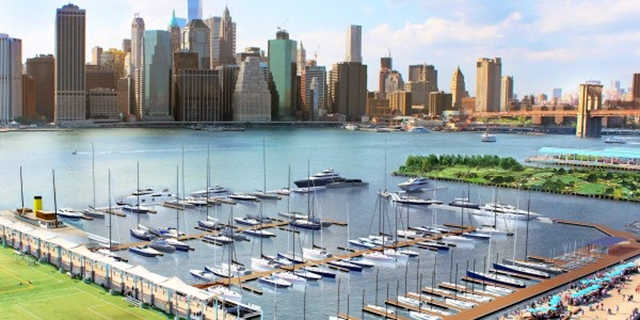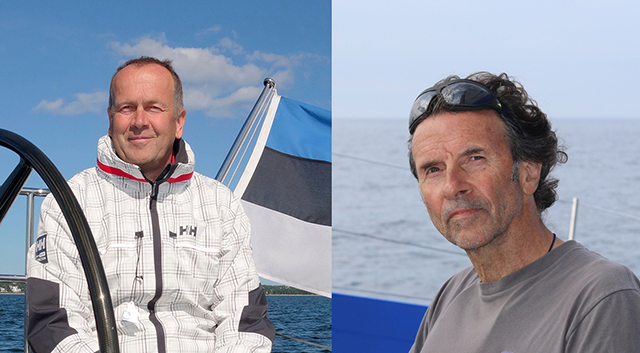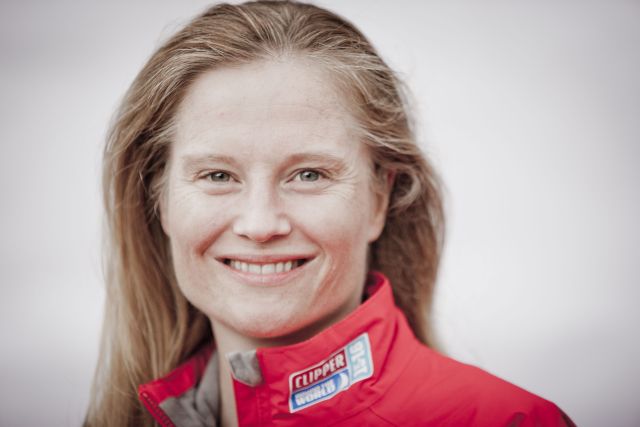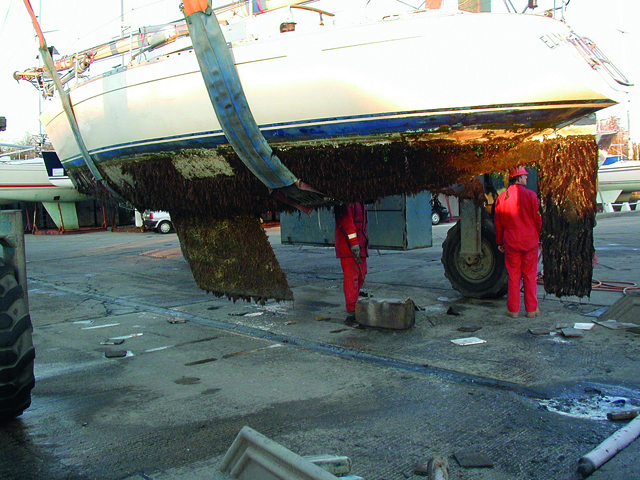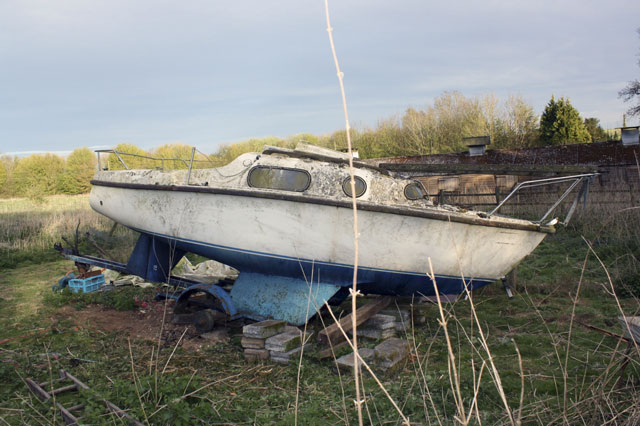VandB skipper Maxime Sorel is safe and uninjured, although his Transat yacht was damaged.
The Transat yacht VandB has been in ‘serious collision’ with a cargo ship and suffered damage to its bowsprit and rig – although the skipper is safe and uninjured.
French yachtsman Maxime Sorel on board the yacht VandB was among the leaders in the 10-strong Class40 fleet, as the boats raced downwind in the northern Bay of Biscay about 90nm west of Lorient, when he reported a collision at 09h59 BST on 3 May.
Sorel reported that he was safe and uninjured but that ‘He had a serious collision with a cargo ship, and the bowsprit has been damaged, with potential damage to the rig, which is still standing up.’

V&B skipper Maxime Sorel – Class40. Credit Lloyd Images
The boat suffered damage to its bowsprit, forcing Sorel to head to the French port La Trinite sur Mer in Brittany. Sorel is safe and uninjured and the boat’s mast is stable but he is very disappointed to have to retire.
The collision happened in broad daylight and good visibility this morning, in an area of busy commercial shipping off the Brittany coast.
Sorel said he was keeping watch as VandB sailed under spinnaker but he did not see the cargo ship. ‘I was not sailing particularly fast and I tried to avoid it but it was too late,’ said the French skipper as he limped toward the coast.
He said he had two options when he realised a collision was inevitable. Either hit the ship lengthways which risked bringing VandB’s mast down or hit the ship at an angle, helping to confine the damage to the bowsprit. ‘I’m stressed seeing all these freighters around me,’ he added. ‘I have this image in my head and when I see one, I get stressed about it.’
Sorel is hoping to reach port tomorrow morning. Reflecting on the cruel hand that fate played, he added: ‘I’m disappointed. You (the organisers) called me this morning to tell me that I was leading the Class40s and now you call to talk to me about why I am giving up. It’s disappointing to have to retire like this.’

British skipper Phil Sharp in The Transat bakerly Class40 fleet. Credit: Lloyd Images
Elsewhere in the Class40 fleet, the sole British entry in the class, Phil Sharp on board Imerys, has been referred to the Race Committee Jury after apparently sailing through an area of water restricted to commercial shipping at Ushant. The Traffic Separation Scheme (TSS) off that busy corner of France is strictly out of bounds to the yachts in the race rules.
Sharp has been sailing a superb race in the early stages, regularly holding the lead, but he may face a penalty for the infringement. Contacted on the sat phone he said he had not realised the TSS was out of bounds.
‘I was aware of the TSS and I kept well out of the shipping lane, but I wasn’t aware that it was a restricted zone – I wasn’t aware that there was a boundary,’ he said. Sharp also revealed that he nearly lost his spinnaker when it detached from the rig as he was down below and ended up in the water behind the boat.
‘I looked up one time and the spinnaker was just not there,” he said. “I went on deck to find the whole thing in the water. But it’s fine and not damaged. I managed to get it back and re-hoist it after a couple of minor repairs.’
The Transat race
The 25 boats in The Transat bakerly 2016 fleet set sail on Monday 2 May, on one of the great races in solo sailing, the 3,050-nautical mile passage across the north Atlantic from Plymouth to New York.
Spectators both on shore and on the water turned out to watch as the mainly French fleet gathered under grey skies on Plymouth Sound to answer the starter’s gun fired from the decks of the Royal Navy frigate HMS Kent yesterday afternoon.
The forecast for this year’s race – the first time this classic has been staged since 2008 – is for a reasonably quiet start but for 45-knot headwinds and big seas for the leading yachts by tomorrow, as they head into the Western Approaches.

The Transat Bakerly race start. Credit: Lloyd Images
The fleet is divided into four classes, each of which will produce an official winner of The Transat bakerly. The fastest boats are the giant trimarans of the Ultime class, three of which are battling it out for line honours, with the first expected to reach the finish at New York in around eight days.
Behind them comes the five-strong fleet of smaller Multi50 trimarans which could fly across the “pond” in 12 days, alongside the six IMOCA 60s – the state-of-the-art monohulls used in the Vendée Globe solo round-the-world race that starts later this year.
The slowest boats will be the smaller monohulls of the 10-strong Class40 fleet which should take around 15 days to complete the course, but in which we should see some of the tightest racing.

Pen Duick II skipper Loick Peyron. Credit: Lloyd Images
Alongside the fleet is a one-off entry by the French racing legend Loick Peyron who is sailing Eric Tabarly’s 44ft wooden ketch Pen Duick II in the same trim as she was when Tabarly raced her to victory in The Transat (then called the OSTAR) in 1964. Peyron is expecting to take around 27 days to reach the finish at New York.
Hervé Favre, event director said before the race start: ‘This race is one of the classics in solo sailing and after it was not staged four years ago we at OC Sport are proud to relaunch it this year. I am delighted to see this hugely competitive fleet of sailors on state-of the art racing machinery now taking on The Transat bakerly 2016 and we wish them all the best for the undoubted challenges that lie ahead.’
Track the race here
Find out more about the race here.
Transat 2016 race – to culminate at New York’s newest marina
The Transat is the successor to the original solo race across the North Atlantic, born as the OSTAR in 1960
2018 Golden Globe Race – more details announced
"Interest in this retro race has struck a chord with so many sailors around the world," says 2018 Golden Globe…
Second Briton dies in Clipper Round the World Race
The death of businesswoman Sarah Young follows that of London paramedic Andrew Ashman, who was knocked unconscious in September on…
Tributes paid to Clipper Race casualty Sarah Young
Clipper Race teams united across the Pacific Ocean with a minute’s silence and ceremonies to pay their respects to Sarah…
Round the Baltic in a Mini Transat
Retired soldier Richard Keeling is gearing up to sail a 21ft Mini Transat around the Baltic Sea to raise money…
Wreck to Transat racer
Is racing across the Atlantic in a boat bought with a student loan really feasible? Here's the story of PBO…
Planning and undertaking an Atlantic crossing
Thinking about an ocean passage? Here's some top tips from Atlantic Rally for Cruisers (ARC) sailors...
New Atlantic Rally for Cruisers (ARC) course record set
Volvo Ocean Race yacht Team Brunel (NED) has broken the Atlantic Rally for Cruisers (ARC) course record sailing from Gran…
Sailors reporting unusual birds to Sea Bird Count project
The “SeaBC” is a citizen science project co-ordinated by long-distance birdwatching sailors from around the world
Leisure 17: Rescued from the nettles
John MacKenzie finds himself renovating a war veteran’s Leisure 17 that had resided among chest-high nettles in a field in…





